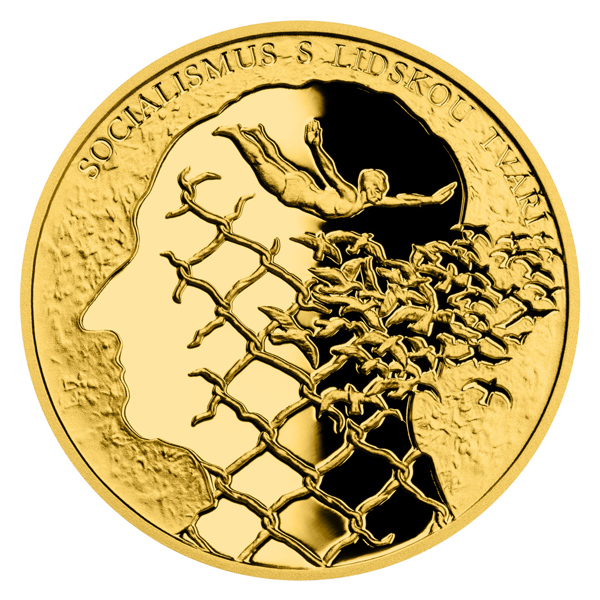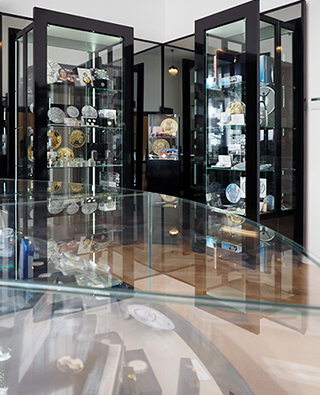New Facts For Scanning Prague Mint Medals
Wiki Article
What Is A Mold Made Of Plaster? Used To Create An Initial Physical Representation Of A Coin Or Medal?
It requires a number of steps for the design of the "maquette", or mold made of plaster, which is that is based on the design of a silver or gold coin. The first step is to take the design on the medal or coin as a source. The design may be drawn by hand or a digital image that is created with graphic design software.Choosing a Medium- Plaster is an ideal material used to create maquettes because of its flexibility and its ease of shaping. Other materials, such as clay or wax might also be used.
Plaster preparation is combined with water to make an easily-workable consistency. It is important to create an even mixture that is without lumps.
Base Creation- In order to sculpt the maquette the maquette, a platform or base must be created. The base could be a flat wooden surface or a board.
The Maquette is designed by using the gold design as a model. This is done by shaping the plaster into relief, or a 3-D rendition of the coins or medals.
Detailing and Refinement - The artist creates details to the design, refines the contours and ensures the accuracy of proportions and design features. This process requires focus and precision.
Allowing Time for Drying and Set-up- After the sculpture has been completed the Plaster must be allowed to set and dry. This allows the maquette to firm up and retain its shape.
Smoothing and finishing Finishing and Smoothing - The maquette's surfaces are later polished and refined following drying to get rid of imperfections, bumps and rough areas.
Preservation and Sealing- In order to preserve the maquette for the future, such as scanning or molding it may be coated with an adhesive.
The 3-D plaster maquette created is used to illustrate the gold design on a coin or medal. It is used as a reference for subsequent stages of production like digital reproduction, mold making to make mass production, or for artists to work on and refine the design before finalizing the. Check out the recommended Czechoslovakia gold coins plaster molds more advice. including bullion price of silver, 1oz gold price today, gold penny, double eagle gold coin, saint gaudens double eagle, buy silver & gold, 24 karat gold coin, five dollar gold coin, american buffalo coin, gold bullion price today and more.

Why Do The Dies Used For Striking Gold Medals Or Coins Undergo Procedures Of Vacuum Hardening?
The vacuum hardening method is utilized in the manufacturing of gold medals or coins. The process involves heating the dies at high temperatures, then expose them to controlled conditions inside a vacuum. Here's an overview of the vacuum hardening procedure used for die preparation and Cleaning.
Diets for striking medals or coins are cleaned and free of any contaminants.
Loading into Vacuum Furnace-
Die dies are kept in the vacuum furnace. It is a specially designed chamber for heat treatment that is capable of creating an atmosphere of vacuum.
Evacuation of Air-
The vacuum furnace draws air from the chamber, creating the perfect vacuum, free of oxygen or other gases. This stops oxidation and provides an even heating.
Heating Phase
The furnace is then heated to the temperature desired for hardening dies. Temperatures can vary based on the materials used and the processing for hardening.
Soaking at High temperatures
The material is allowed to reach the desired hardness and the metallurgical structures are created.
Quenching or cooling
The dies are then immediately cooled off or quenched following soak. The speedy cooling allows the metal reach the desired hardness.
Tempering (Optional)Tempering (Optional)
In certain situations, a process of tempering can occur as a result of hardening. The dies are reheated at a lower temperature in order to lessen internal stress and increase the toughness of the die, while preserving its hardness.
Quality Control and Inspection
Dies that are hardened must go through rigorous quality control and inspections in order to achieve the desired toughness, hardness, or tolerances.
Post-Treatment Handling-
After the process of vacuum hardening is finished Die dies are then subject to further procedures like polishing or coating prior to being used in the coin or medal striking process.
The method of vacuum hardening improves the durability of dies and wear resistance, as well as the lifespan of dies used to strike silver or gold coins and medals. This process, which creates a safe atmosphere free of airborne contaminants, ensures that dies are consistently hardened and consistently, enhancing both the quality and the longevity of the product. View the most popular vacuum hardening Prague Mint gold medals more examples including angel coin, spanish gold coins, order gold coins, gold coins coin, gold angel coin, buy gold and silver, gold and coin dealers near me, bullion gold bars for sale, one oz of gold, gold biscuit buy and more.

How Do Gold Medals And Coins Receive Protective Coatings?
Here are a few various coating methods employed. Here are a few different coating methods.
Clear Protective (Varies). A protective clear coating such as lacquer is applied to protect surfaces from oxidation. The coating is designed to preserve the coin's or medal's original appearance and protects the underlying metal.
Improvement of Appearance
Gold plating, also known as gildingthe surface of a gold coin medal can be gilded or coated with a thin layer of gold. This procedure enhances the look of a coin or a medal, bringing the appearance of luxury and lustre.
Aesthetic effects
Patinas and antique finishes may be created by using chemical treatments or coatings. This method artificially ages the surface, creating an aged or oxidized look that adds dimension and character to the design.
Colorization or Coloring - In some cases the hue of specific areas on a coin, medal, or another item is accomplished by using specialized coatings and enamels. The goal is to improve design elements that create contrast, as well as increase the visual appeal.
Anti-Tarnish Coatings-
Anti-Tarnish Solutions and Coatings - to medals or coins with intricate designs or areas susceptible of tarnishing anti-tarnish coatings and solutions can be applied. They to prevent discoloration and oxidation over time.
Specialized Coatings For Security Or Authentication
UV-Reactive Coatings. Certain coins and medals may have coatings that react with UV light to reveal hidden or encoded elements. These coatings are employed for security and authentication purposes.
Selective Coatings and Contrast
Selective Coating Removal: Some pieces of gold and coins have had their coatings removed from specific areas to create a contrast between the polished surface and the coated surface, which emphasizes the design elements.
Each coating has a reason for being there. It may be to safeguard the metal or improve its appearance. It can also provide security features. These coatings can significantly impact the appeal and lifespan of gold medals or coins and increase their value and appeal to collectors and enthusiasts. See the most popular coating Czechoslovakia gold medals site examples. including buy gold bars from bank, american eagle gold coin, gold piece price, gold quarter dollar, angel coin, krugerrand, gold coins for sale, 100 grams gold biscuit, gold and silver bullion, gold bullion price and more.

How Are Gold Blanks Fed Into Coin Presses Under Extreme Pressure? And Then Stamped?
In the process of minting, gold coins and medals are made by pressing them with pressure. Here's an outline of the steps involved Loading Blanks-
Gold blanks, which have been previously prepared and inspected for quality and quality, are then loaded into a feeder system that is connected to the coin press. The feeder system is responsible for maintaining an uninterrupted flow of blanks to the machine.
Feeding Blanks on the Press
The system of feeding is designed to move the blanks one-by-one into the chamber for striking. This ensures precise placement of the blanks.
Alignment and Positioning
Inside the press, blanks are aligned before being placed in the striking chamber to ensure that they are completely centered and oriented to allow for the stamping process.
Moving Under High Pressure
The coin press applies high pressure onto the gold blanks by using a pair of dies--one stationary and one moving. The stationary dent contains the negative design impression and the die that moves is known as the Hammer.
Die dies hit the blank with a great deal of force, which transfers the design onto its surface. The force exerted by dies stamps the design on the blank, creating the relief that is raised as well as specifics on the coin or medal.
The repetition of striking is not required.
Multiple strikes are a great way to create a more sharply drawn appearance or design on high quality coins and medals. Each strike helps to refine the details inside the blank.
Ejection and Collection
Once struck, the freshly minted medals or coins are released from the press, and then placed in trays or containers. The designs stamped on them are checked for quality and ensure they meet specified standards.
Post-Processing-
In accordance with the specifications of the mint or design, coins and medals can be subjected to additional treatments like edge lettering or reeding as well as post-strike treatments.
The process of stamping under extreme pressure is essential because it imparts the desired design on the gold blanks, turning them into medals or coins that are ready for use in collection, circulation, or commemoration. The stamping process requires accuracy as any variations in pressure and alignment could impact the final product's quality. Read the best minting Prague Mint gold coins more info. including gold dollar, gold penny, $5 gold piece, 1oz of gold, gold coins, gold angel coin, congressional gold medal, silver eagle coins, coin buy silver, gold coins for sale and more.
